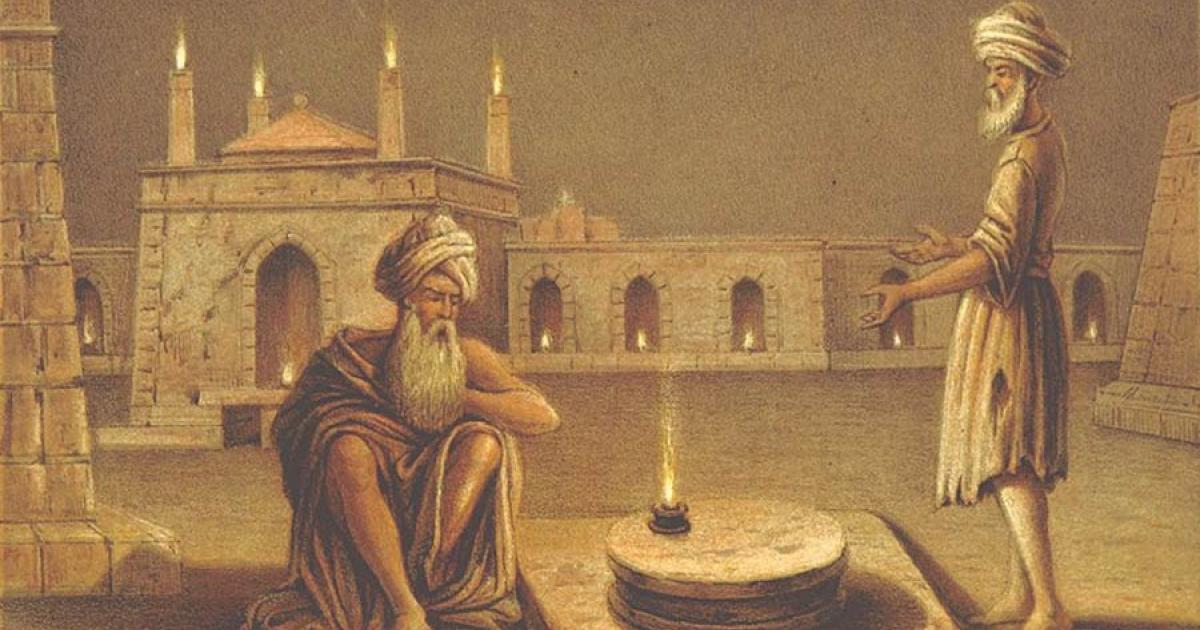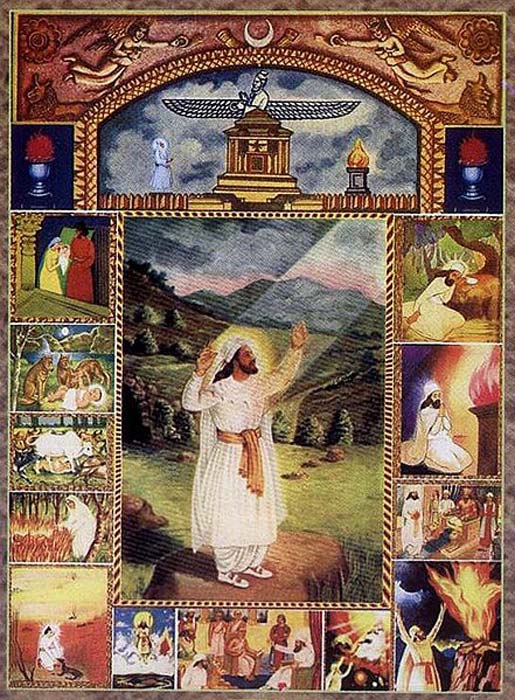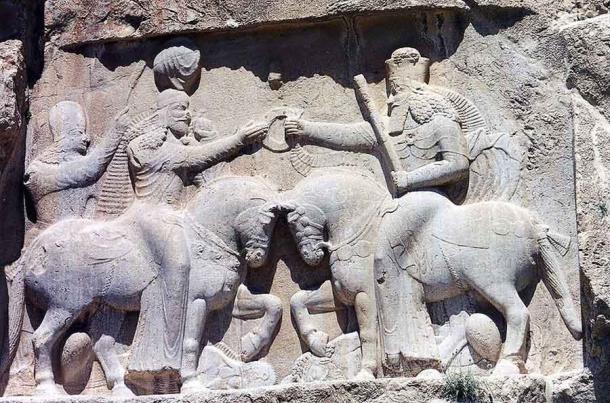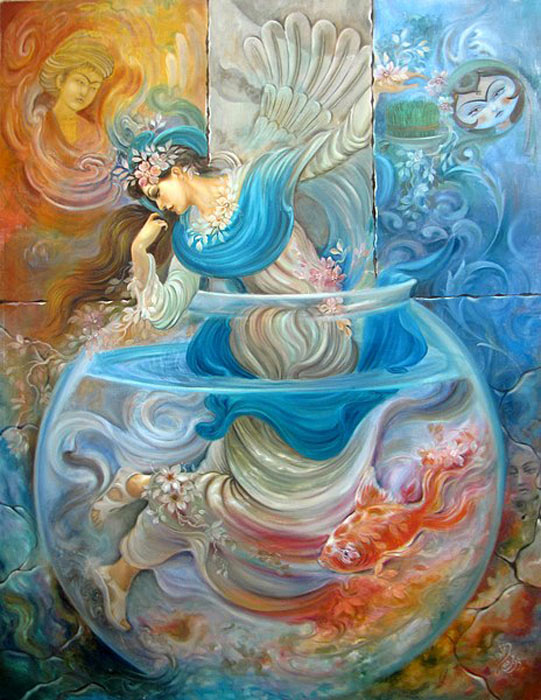
Zoroastrianism: 4000 Years of Faith, Fire and the Battle Between Good and Evil
The origins of Zoroastrianism can be traced back to nearly 4,000 years ago. It was the first monotheistic faith in the world and even Persia’s official religion from 600 BC to 650 AD. And it still exists! However, while it was a powerful religion in the distant past, now Zoroastrianism is one of the smallest religions in the world. There are between 100,000 to 200,000 modern followers of Zoroastrianism worldwide.
Zoroaster – The Founder of Zoroastrianism
Zoroaster (Zarathushtra), a mysterious prophetic figure, founded Zoroastrianism in ancient Iran. While the precise date of the religion’s foundation is not known, it is believed to have been established between 1200-1500 BC, as per the archaeological evidence.
Zoroaster was born in Southwest Afghanistan or Northeast Iran. He was born into a family that followed a polytheistic religion which included the ritual use of different intoxicants and animal sacrifice. Very little information is available about the birth and early life of the prophet Zoroaster. Most of what is known about Zoroaster comes from The Gathas, which is an ancient hymn collection composed by Zarathushtra.
- Who Was Zoroaster and How Did He Gain Religious Followers?
- Emergence of Zoroastrianism and The Legacy of Zarathushtra

Life of Zoroaster, founder of Zoroastrianism. (Public Domain)
Zoroaster rejected the Bronze Age Iranian religion that included worshipping many gods. He was also against the hallucinogenic Haoma plant use for rituals and opposed sacrificing animals. The early Zoroastrian texts reveal that the prophet used to receive answers through his prayers. Later writings state that he even ascended to heaven to speak with God directly.
As per the Zoroastrian tradition, Zoroaster had a divine vision when he was thirty years old. In the vision, he saw his Amesha Spentas (seven divine entities) and God while performing a ritual purification rite. This single vision changed his worldview, and he went on to tell others about it. He started believing that there was only one God, the creator. He also taught that the one God, called Ahura Mazda, was worthy of all worship.
Some of the deities, such as the Daevas of the old religion, seemed to delight in strife and war. According to the prophet Zoroaster, they were evil spirits who worked for Angra Mainyu, the adversary of God.

The Investiture Relief of Ardashir I, with Ardashir on the left, and Ahura Mazda on the right. (Ginolerhino 2002/CC BY-SA 3.0)
Zoroastrian Religious Beliefs
The core belief system of Zoroastrianism is that Ahura Mazda is the supreme being of light and goodness, and Agra Mainyu is the spirit of evil and darkness. Ahura Mazda means ‘Wise Lord.’ Ahriman, who is equivalent to the devil, is believed to be the embodiment of Agra Mainyu.
According to this religion, everything that happens is driven by the dual forces of dark and light. Zoroastrians believe in the concept of free will. All human beings are free to make a choice whether they want to follow the path of light or darkness. The followers of this religion believe that ethical and active participation in life through good thoughts, good deeds, and good words is essential to keep chaos away and ensure happiness in life.
The religion teaches that Ahura Mazda is the creator of the whole universe and is compassionate by nature. He is omnipresent, omnipotent, and omniscient. He is unchanging and the source of all happiness and goodness. He is capable of conceiving things that are impossible for humans. Zoroastrians also believe that everything that the Wise Lord has created is pure and must be treated with respect and love.
At the age of seven, the followers are given a kusti (cord) and sudreh (shirt) as a part of a ritual initiation ceremony. The garments are considered sacred. They tie the cord around the shirt three times to remind themselves of good words, good thoughts, and good deeds. They perform this ritual along with prayers several times a day. They emphasize action over belief. Zoroastrians generously give to charities and participate in social and educational initiatives.
Fire and water are symbols of purity in the Zoroastrian religion. The followers of this religion worship in fire temples that contain an altar where flames burn 24 hours a day. Earth and air are also considered sacred elements for Zoroastrians. Traditionally, Zoroastrians placed their dead on top of special towers where the bodies were left to be eaten by birds. However, modern Zoroastrians bury the dead in stone or concrete graves.

Printed drawing of 'Towers of Silence', two circular raised structures used by Zoroastrians (parsees) to dispose of the dead. (Wellcome Images/CC BY 4.0)
Zoroastrian Holidays
According to the traditional Zoroastrian calendar, each month consists of 30 days and 5 or 6 days are added to the end of the year. Zoroastrian holidays usually fall on the same day every year. One of the most widely celebrated holidays for Zoroastrians is Nowruz. It is their New Year festival that falls on the first day of spring. They spend a month preparing for this holiday. According to the followers of the religion, the concept of New Year is to start fresh. It involves cleaning both one’s house and one’s soul.
- Ahura Mazda and Angra Mainyu In Zoroastrianism’s Creation Mythology
- Zoroastrian Towers of Silence: Leaving the Dead for the Vultures
Moreover, if anyone has old quarrels, they need to settle them by this date. During this festival, every house is filled with sweets, fruits, and long-stemmed white flowers. Gifts are exchanged for the New Year. Nowruz is still embedded in Iranian culture and is now celebrated as the Iranian New Year.

A painting depicting Haft-sin symbols of Nowruz related to the elements of Fire, Earth, Air, and Water, and the three life forms of Humans, Animals, and Plants. (Yousef abdinejad/CC BY-SA 4.0)
Khordad Sal is another significant festival Zoroastrians celebrate. It is Zoroaster’s birthday and is celebrated six days after Nowruz. On this day, the followers of this religion gather in fire temples to feast and pray together.
As you can see, along with being one of the oldest religions, Zoroastrianism is also an interesting religion to explore.
Top Image: The fire temple of Baku, c. 1860. Hindus, Sikhs, and Zoroastrians have worshipped here. Source: Public domain
By Bipin Dimri
References:
Zoroastrianism. Available at: https://www.history.com/topics/religion/zoroastrianism
Before Christianity, Judaism, and Islam, There Was Zoroastrianism. Available at: https://people.howstuffworks.com/zoroastrianism.htm
Zoroastrianism. Available at: https://www.bbc.co.uk/religion/religions/zoroastrian/















Comments
If able, intererested parties should look at the translated work of Edmund Szeley Bordeaux. He also did the early translation of the Essene scrolls. He wrote a book called The Zend Avesta of Zarathurstra. If you can lay hands on it, it includes pictures of the original cuniform tablets the Avesta, or The Word, as it literally means. Very important, and not often mentioned in the articleds that usually appear on these kind of sites, that the Avesta is also where the Hebrews got many of their premises. The day of Judgement, the Seven before the Throne, and many more teachings will jump out at those familiar with the Old Testament teachings. There are many of Dr Bordeauxs’ additional works I would recommend. Archeosophy, a New Science, would be the next one to obtain.
Jamie R
It is my opinion that the world would be a better place if all out man made religions were replaced with the straight forward and practical teachings of Zoraster. These are workable.